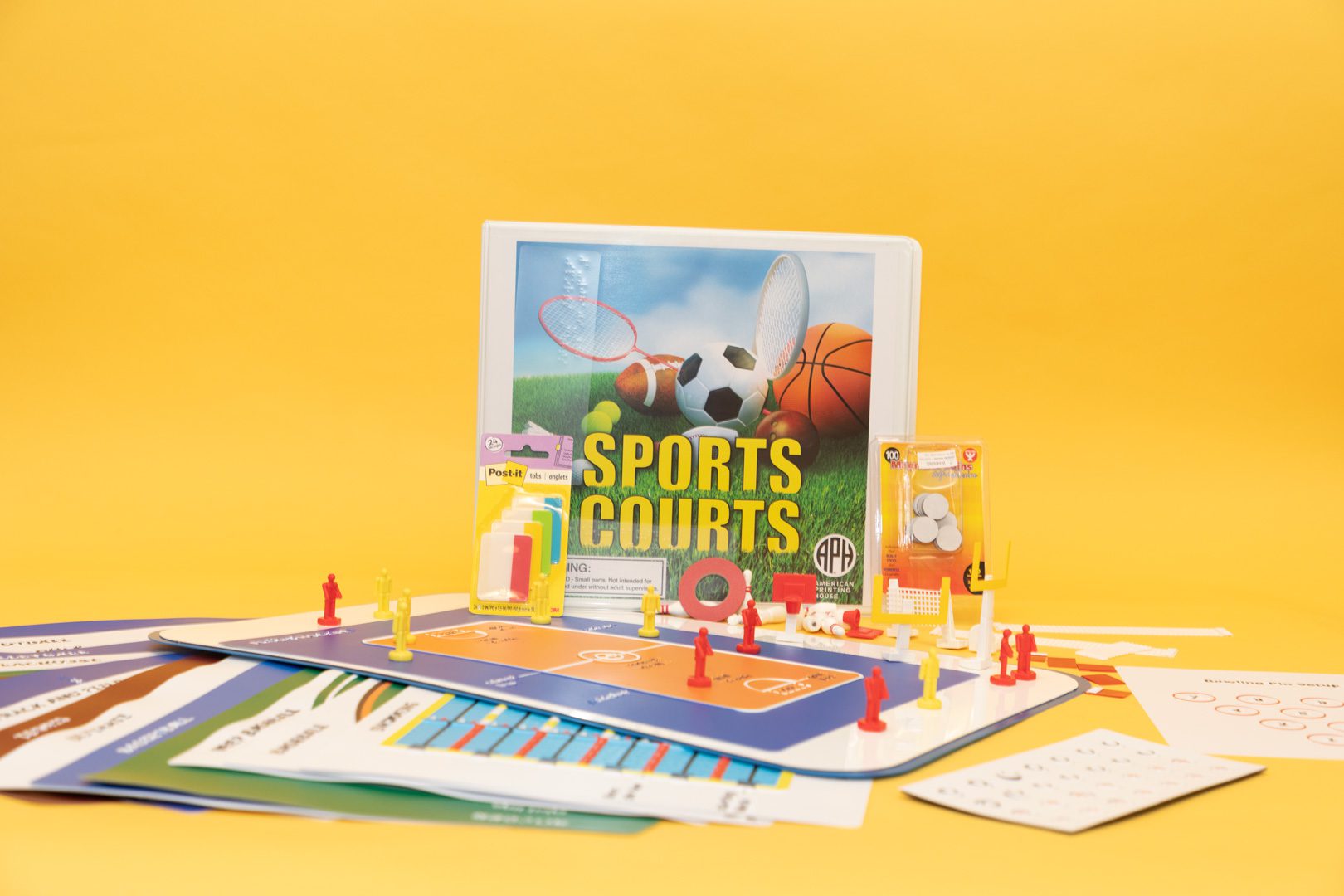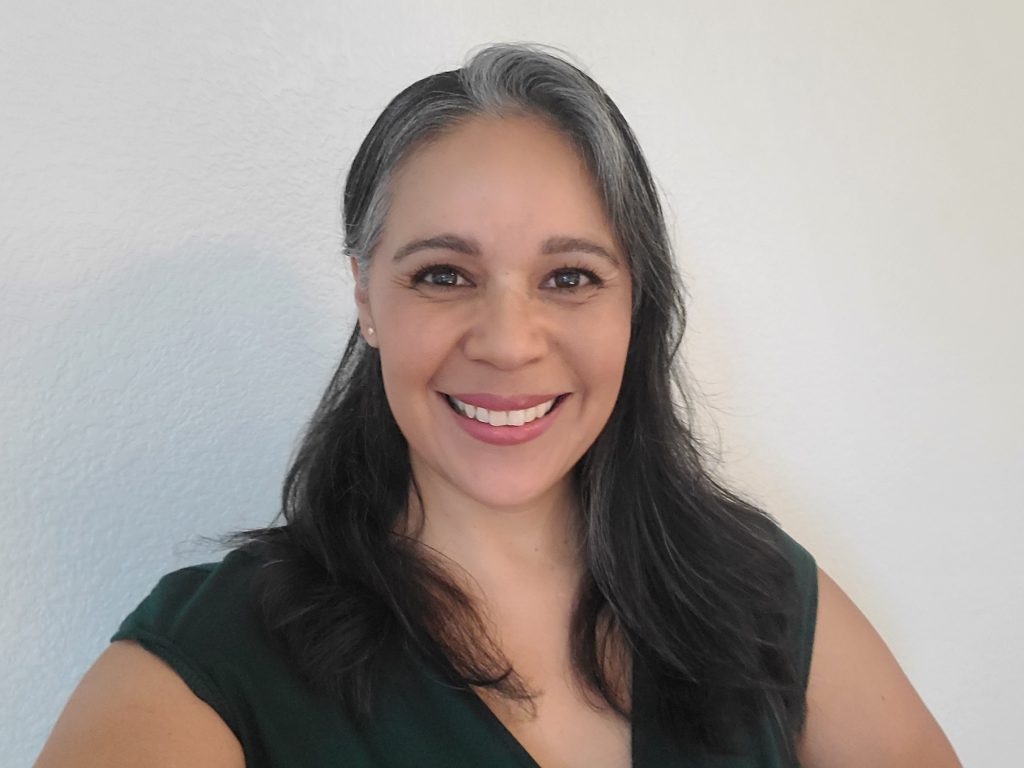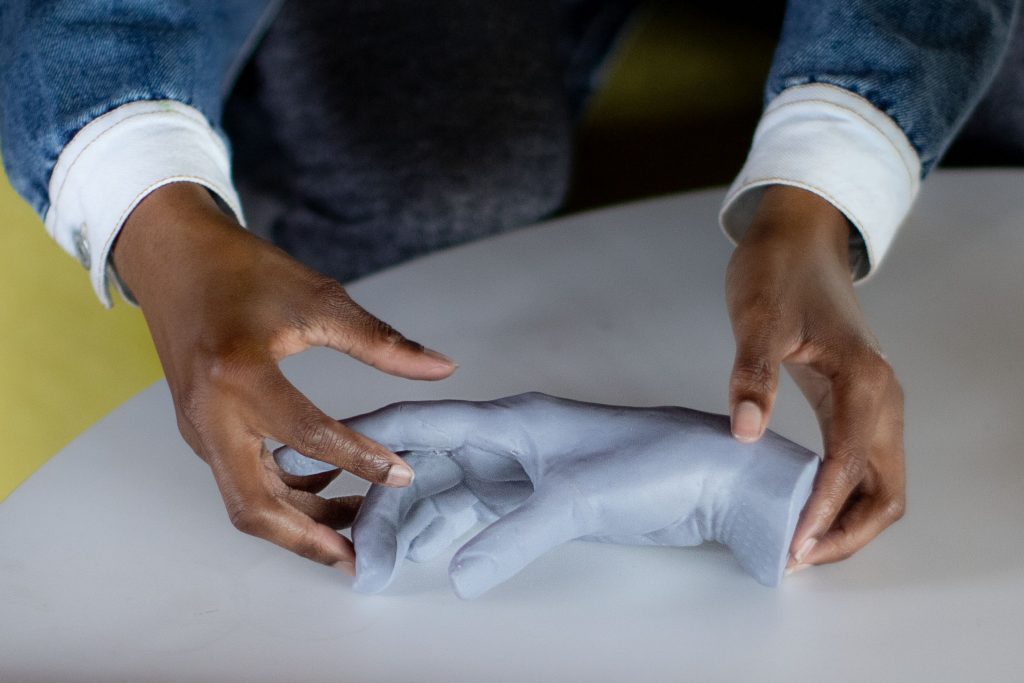To ensure gift delivery by 12/25, please place orders via UPS shipping no later than 12/17.
CloseAdapted P.E. and SPORTS COURTS

We recently spoke with Amanda Dennis, Paralympic Goalball athlete and APH’s new Engagement Specialist, about the lack of adapted physical education for blind or low vision students and individuals and how she hopes SPORTS COURTS is going to change that.
Q: What opportunities do students who are blind or low vision have for adapted physical education?
A: The best kind of P.E. that someone who is blind or low vision could have is if they go to a blind school where they already have the equipment to make the sports/activities adapted. The other option is a mainstream school, where oftentimes they can’t take part in regular P.E. class. A lot of times students get left off to the side, or their vision teacher comes during that time, so they do other things that aren’t physical activity related.
Q: How can various sports and activities be made accessible?
A: Whether you have someone who is blind or low vision, or maybe even someone whose condition is less severe, there are ways to accommodate them and make physical activities and sports more inclusive. Tactile things that make things brighter or make noise, auditory devices that make the sport easier, or things that you can find in your house that are cost-effective, can be added. For example, you can attach bright colors to a ball, you can tape a grocery bag onto the ball, or put bells inside of it so they can hear the ball when it gets kicked or moves around. One option for running is that you can give a string to another runner so they can be a guide runner, and then the person that is blind or low vision can run with them. The string could be something as simple as another shoelace. Whether it’s running or flag football, there are ways to make physical activities more accessible that are cost effective.
Q: How do you see SPORTS COURTS raising awareness about adapted P.E. and being part of the solution?
A: SPORTS COURTS can be used with those who are blind or low vision so that they can tactually feel the court or field. This means that they will be able to grasp the environment they’re in and if there are any important lines in that environment. You can put pieces on the courts and move them around so that students can feel how the game is supposed to be played, or where they’re supposed to be going. This is important for them to comprehend the environment and how the game is supposed to be played. With SPORTS COURTS, someone who is blind or low vision can know what the sport is, picture the game in their head, understand what is supposed to be going on, how the field is supposed to be, and how they are supposed to play the game.
Q: How do you see SPORTS COURTS impacting adapted P.E.?
A: SPORTS COURTS is about educating those who are blind or low vision about different types of sports and how those sports work, and then finding an adapted way for them to take part in them. After you ‘show’ someone who is blind or low vision a sport using SPORTS COURTS, they are going to be able to conceptualize and better understand what is happening and how they can get in there and play the game, right alongside their sighted peers.
More About SPORTS COURTS
SPORTS COURTS is a one-of-a-kind, instructional kit designed to familiarize students who are blind or low vision with a variety of sports and encourage participation in athletics. Interactive and tactile maps allow students to become oriented with the layout of various sports courts and fields – Badminton, Baseball, Basketball, Beep Baseball, Bowling, Floor Hockey, Football, Goalball, Golf, Lacrosse, Soccer, Swimming, Tennis, Track and Field, Ultimate, and Volleyball.
The tactile layouts in SPORTS COURTS provide a snapshot of the entire court/field that can be challenging to comprehend by verbal description alone. The scaled-down representations (11”x17”) can be safely explored by fingertips to form a mental image of each court/field’s layout. The accompanying magnetic-backed 3-D pieces enhance learning by allowing interactive setups and demonstration of player positions and movements, as well as critical features, such as nets or goal posts.
Beyond just the basics of each sport’s standard rules, scoring methods, and terminology, the guide outlines specific recommendations for instructional strategies, equipment modifications, and gameplay accommodations for the target population.
What educators are saying about SPORTS COURTS
“SPORTS COURTS is an invaluable ready tool that PE teachers can use to give students who are blind or low vision easy access to understanding court layouts and player positions. It gives teachers all the information they need with well thought-out graphics and tactile images that are not cluttered.”
“It is an amazing product that will change adapted PE inclusion. The materials were versatile and able to be used and stored on the go.”
Share this article.
Related articles

Meet APH Scholar Patricia Gallardo
Meet APH Scholar Patricia Gallardo Patricia Gallardo joined the Child Development program at Braille Institute in 2018, and in 2022...

Designed to Include: The Dot Experience Begins with Accessibility
Every aspect of The Dot Experience, from the elevator shaft to the carpeting is being carefully planned, built, and tested...

Honoring Our Influencers: From Goalball to Life Goals
As The Dot Experience continues to develop, the Influencer Campaign has provided individuals with the opportunity to share authentic stories...
